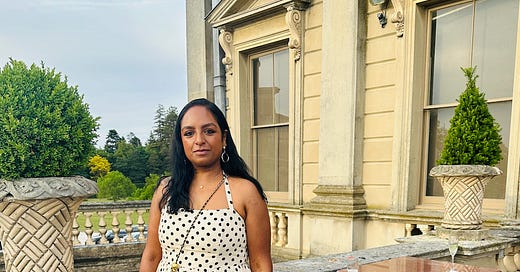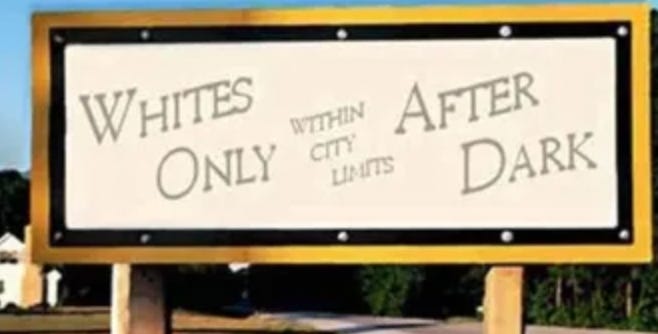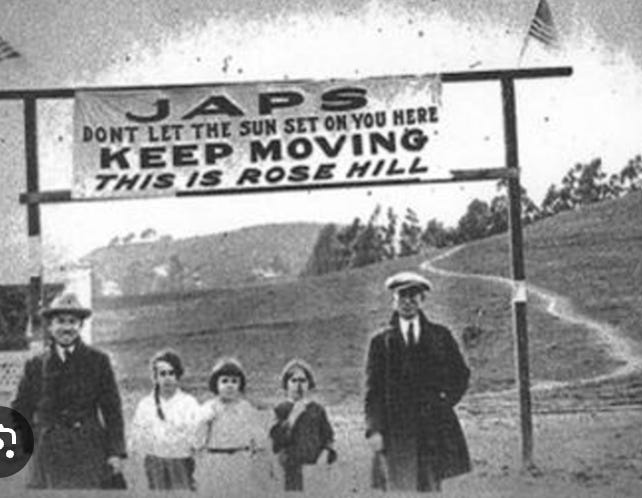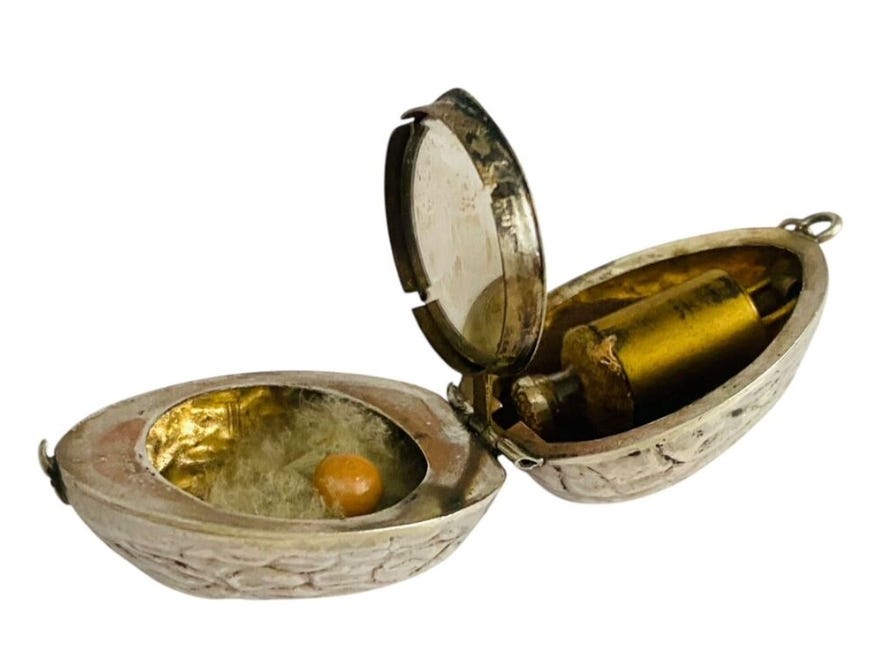Inside my curiosity cabinet
Five obsessions I’ve spent an unhealthy amount of time reading about this month...
Everyone has their intellectual vices. These are mine - the strange, the overlooked, the beautifully obscure corners of history, beauty, scandal, and myth that I can’t help but read about until I exhaust the topic entirely. This is my curiosity cabinet: a collection of fascinations that have claimed far too many late nights, dusty books, and open Reddit tabs. Perhaps they’ll enchant you too - or at least tempt you to dive in and lose a few (many) hours of your own…
Do ‘Sundown towns’ still exist?
Ever heard of ‘Sundown towns’? I hadn’t until I watched The Green Book recently, (it came out in 2018 so I’m super late to the party.) Set in 1940s America, a white chauffeur is given a drivers manual called The Green Book, to make sure he avoids driving his Black client, a classical musician, through any ‘sundown towns’ after dark.
Sundown towns were places in the US that warned Black people (and other minorities) to leave before nightfall or face violence and persecution. From the late 1800s until the 1980s(!) thousands of villages, suburbs, and even whole counties posted signs like: “Don’t let the sun set on you here”, enforced curfews with police harassment, or relied on mob intimidation to let people of colour know they weren’t welcome.
No federal statute created them; local white communities, housing authorities, and vigilantes did the work, keeping entire regions all‑white for generations. Because it was all done on the down-low, there are few archival records that describe which towns followed these practices and it’s mostly oral histories that have allowed us to understand them.
But their impact lives on; whole counties have stayed nearly all‑white because of it, and they played a part in shaping who got what jobs and homes for generations. I did a deep dive and there were many suggestions that some towns in the US follow this exclusion to this day, albeit in a secretive way - and there’s a map current suspected sundown towns here. I don’t think we hear nearly enough about them - and their legacy, which still remains.
Though the UK never had literal sunset curfews, some suburbs enforced the rhetoric in other ways - like saying ‘no‑coloureds’ in letting ads, racist covenant clauses, ‘locals only’ signs in stores and pubs - to keep out Black and Asian families.
I’m super curious to know if you’ve been to or suspected that a place might be a sundown town? And if you’re in the UK (or elsewhere) then do you know of any towns that are still super hostile to people of colour? From what I’ve heard from friends who have lived in these places, and some of my own experiences, there are parts of Essex and Norfolk that could have this vibe?
2.Should we bring back chatelaines? I’m down…
I regularly scour ebay for vintage beauty trinkets and compacts - call it my mindful activity - and I came across this one, that I think was probably meant to be worn on a chatelaine.
Think of a chatelaine as the Victorian answer to a multitool. It’s a decorative waist‑hung chain designed to hold life’s little essentials: scissors, thimble, needle case, vinaigrette, watch, keys, cosmetics and even tiny notebooks. The name nods to the château‑running “chatelaine” of medieval France, keeper of the keys. By the late 1800s these mini utility belts doubled as jewellery, sporting silver filigree, enamel, or pearls.
Wristwatches and handbags eventually stole their thunder, but I love the idea of having everything you need on a keychain or that all your beauty needs were taken care of with this one small walnut-like device. Inside this walnut shaped silver compact is a mirror, vial of perfume, powder photo frame and so much more. It’s such a gorgeous little bit of beauty history - and I can’t help but feel jealous of how small this touch up kit is compared to my giant make up bag.
3. What is the line between a beauty founder, feminist hero and serial killer?
I’m fascinated by the tale of Giulia Tofana. Operating in Palermo between 1631 and 1659, this noblewoman whipped up hand-made cosmetics - with a difference. Her best seller was Aqua Tofana. Disguised as a beauty product to avoid suspicion, it was actually a clear, tasteless poison designed to be slipped into wine or soup.










